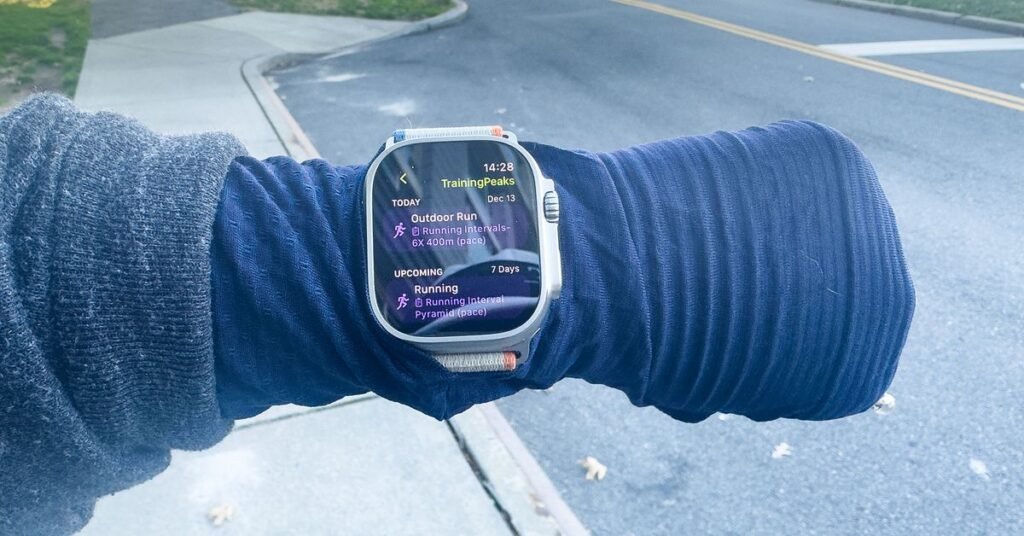The holiday season is probably not the best time for training. The big races of the year are over! Still, Apple and TrainingPeaks are getting a head start on next year’s resolutions with a new integration that lets you import custom workouts directly into the watch.
If you’re not familiar with TrainingPeaks, it’s an app that helps endurance athletes find a workout plans for their next half marathon, triathlon – you name it. If you wish, it also offers a coaching service that matches you with an accredited coach to customize your plan based on your schedule, performance and individual needs. The idea is to take the guesswork out of what you should do to prepare for an event.
The integration itself is simple. It is based on a new watchOS 10 API and how it works is similar to how Garmin Coach workouts simply appear natively on a Garmin watch once you enroll in a program and sync your watch. All you need to do is enable the feature in the TrainingPeaks app settings and allow a few Apple Health permissions, which is very simple to do.
I was able to try it out for myself ahead of the official launch, and it’s definitely something that will appeal to people who usually buy rugged multisport watches. (The Garmin crowd, if you will.)
The TrainingPeaks running workouts I’ve tried are pretty standard for intermediate to advanced athletes. I was set up with a Premium account, so I was also able to see coach feedback in the app. But what I loved most was how it removed another obstacle to getting out of bed, lacing up my sneakers, and hitting the pavement. Analysis paralysis is real and doesn’t have to be think knowing what workout you’re going to do is a major boon to staying on track. Especially if you’re tired of browsing multiple apps or websites to manage a single training plan.
For example, for my last half marathon, I used a Runkeeper training plan but manually recorded each workout on the Apple Watch. And in the phone app. Was it very ineffective? Absolutely, especially since Runkeeper has an Apple Watch app. My problem was that I don’t like the interface of the Runkeeper Apple Watch app and much prefer the workout views of the native workout app. But to get my preferred interface, that meant I had to program my own custom runs for interval or tempo runs on the Apple Watch. This gets real old very quickly.
With the TrainingPeaks integration, there was none of that. When you open the workout app, you can see what the workout for the day is. The TrainingPeaks logo is clearly there and if you tap the three-dot menu you can check out more workout details or see upcoming workouts. When you complete a particular workout, that data is sent directly back to the TrainingPeaks app itself and you can view the results there or in Apple’s Fitness app.
It seems like a small thing, but streamlined all your data and fitness plans across multiple apps, devices, and platforms can be a pain. I’m a portable reviewer and my own system is far from efficient. So it’s nice to see this type of feature coming to the Apple Watch – and it’s a big deal if Apple wants the Ultra to succeed in a category dominated by Garmin. Many endurance athletes don’t use a single app or platform, and most other multisport watches have features and integrations that better accommodate personalized training.
However, we will have to see how many other third-party applications take advantage of this API. Personally, I didn’t like the interface of the TrainingPeaks app and while I liked the programming, I’m more inclined to stick with the apps I currently use. It would be great if those apps created like TrainingPeaks and took advantage of the API in the same way. But even if many do, the Apple Watch still has a way to go before it’s thought to turn the heads of die-hard Garmin fans. If he really wants to convince these people, he’ll need to tackle battery life and recovery tracking next.


